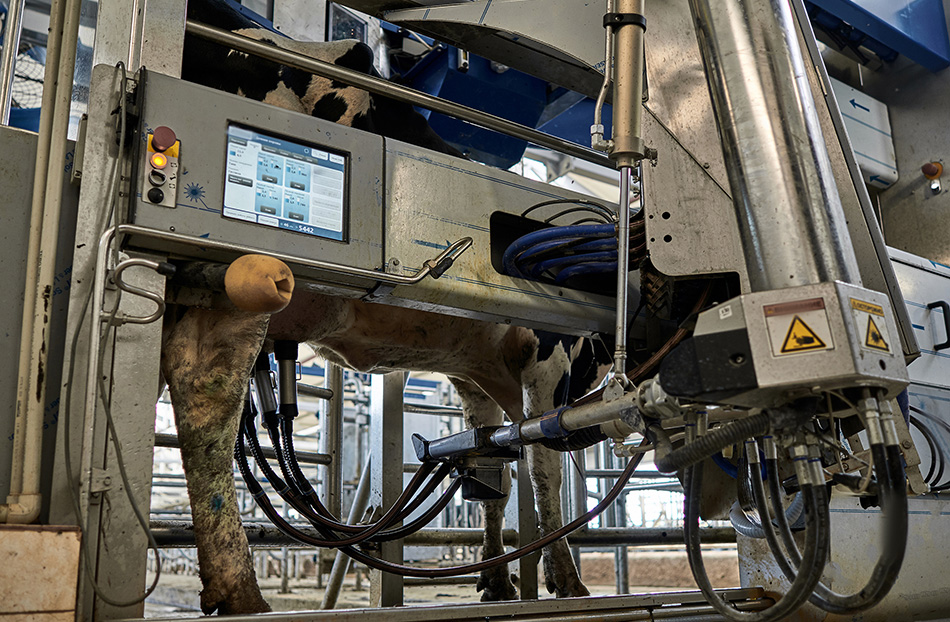Dairy Farm Contamination Issues—How Sampling Comes to the Rescue
Dairy farm contamination issues are serious. Accurately identifying a source of contamination is critical for effective elimination.
In this post, I’ll chronicle one farm’s troubleshooting journey to identify the source for elevated Preliminary Incubation (PI) counts in its raw milk. The PI count is becoming an increasingly popular measure of quality; elevated levels generally indicate contamination source(s) related to hygiene issues on the farm. While the steps to identify the source can be laborious, accurate sampling can help narrow the scope. A thorough investigative process sometimes leads to a contamination source that was not suspected.
“Every dealer should be using the [QualiTru] QSS sampling system as it eliminates a lot of wasted time when helping customers troubleshoot critical issues on the dairy farm.”
The cost of identifying and solving dairy farm contamination issues can be high
I routinely visit a 170-head dairy farm that was dealing with a Preliminary Incubation (PI) count issue. While the farm’s Laboratory Pasteurization Count (LPC) and Standard Plate Count (SPC) were satisfactory, its PI count had been elevated for about six months.
The farm had consistently received premium payments for its milk until about six months after installing two robotic milking stations. Although the farm never had any loads of milk degraded or rejected at the processing plant, the high levels of PI meant they no longer received premium payment. This is a significant loss on any farm, especially a small farm.
Identifying the source of bacteria requires a series of detailed steps
Multiple steps were taken during the six months of elevated PI counts to identify the contamination source. We did numerous tank flush-outs, but the time-temperature concentration always checked out fine. There were no build-ups of bacteria in the tanks.
We suspected that there could be an issue with the sampling protocol, so we took our own samples and sent them to our own lab for testing. However, results still indicated high PI counts, eliminating the theory of sampling error.
We tried different chemical mixtures during clean-in-place (CIP) and tested the water’s Ph level and hardness to rule out a potential reaction to the cleaning chemicals. Again, we could not pinpoint the cause of the high PI counts.
I then brought in the QualiTru Sampling System to troubleshoot the issue. We installed sampling ports before and after the filters and the plate cooler, and on both robots after the buffer tank before the milk went into the bulk tank.
We sampled the sites using a peristaltic pump to ensure accurate and representative samples. The resultant testing data showed that PI counts along the line were acceptable but elevated upon reaching the robotic equipment. We had finally successfully narrowed our focus for locating the contamination source.
“The QualiTru system was effective in isolating the contamination source. Instead of remaining a global issue on the farm, we were now confident that the source was somewhere in the robot room.”
The next step was to replace everything inside the robots, from rubber parts to pump seals and gantline gaskets to the bulk tank. The tests still came back with elevated PI counts. At this point, we were grasping at straws and decided that we would collect well water samples from the hoses used to backflush the system between cows.
Finally, success! Test results came back with high PI counts from the well water samples. They were backflushing the system with high bacteria water. Chlorinating the well water and flushing the lines helped lower the PI count. Ultimately, the farmer decided to drill a new well to improve water quality and more permanently solve the high PI count issue.
The QualiTru system helped eliminate inline processing sites as potential contamination sources and accurately narrowed the focus. Without using the ports and pumps in those strategic locations, I wouldn’t have been able to isolate the issue. The well water hadn’t been tested because they hadn’t suspected it as an issue.
QualiTru understands sampling challenges and has the solutions you need to increase efficiency and profitability.
As this example shows, identifying a contamination source on a dairy farm can be a daunting task. Using the QualiTru Sampling System for process monitoring is a proven component of a Quality Management Pprogram and can effectively help to identify contamination sources.
QualiTru’s sampling experts can help identify critical points for sampling within your process.




